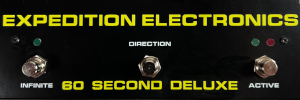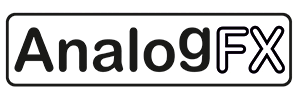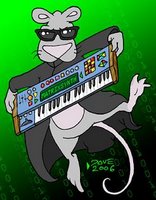Note: links to listings are affiliate links for which the site may be compensated.
via this auction
"OVERVIEW (from original Open Labs promotional material):
Sequence songs, create beats, track vocals and instruments, trigger MP3s, and perform live - the NeKo LX5 does it all.
With a 15" touchscreen, 61 black-and-white keys, external QWERTY keyboard, and running Windows OS, the NeKo LX5 is a world-class multimedia instrument. This portable media production station was specifically designed with superb keyboard playability to meet the needs of studio music production and live performance effortlessly.
Showing posts sorted by relevance for query virtual 1. Sort by date Show all posts
Showing posts sorted by relevance for query virtual 1. Sort by date Show all posts
Wednesday, July 12, 2017
Thursday, April 27, 2023
Rob Papen Introduces BIT-2 Analogue Synthesis-Modelled Virtual Instrument
video upload by Rob Papen
Update:
Rob Papen Live Stream 27 April 2023 BIT-2 & how the introduction video was created
Press release follows:
Rob Papen takes trip back in time to boost BIT-2 beyond namesake plug-in predecessor as analogue synthesis-modelled virtual instrument
ECHT, THE NETHERLANDS: virtual instrument and effect plug-in developer Rob Papen Inspiration Soundware is proud to announce availability of BIT-2 as an analogue synthesis-modelled virtual instrument — with which it takes another trip back in time to take its namesake plug-in predecessor (released in 2019 to widespread critical acclaim with outstanding audio quality) to the next level with numerous new and creative features — as of April 27…
As an apt acronym if ever there was one, BIT stands for ‘Back In Time’. This alludes to the fact that the BIT-2 virtual instrument plug- in — like its namesake predecessor — mainly focuses on modelling analogue synthesis from a pre-digital era that has a still-sought- after charm of its own, one which had not been covered before BIT by the Rob Papen brand, whose virtual instrument products previously combined the best of analogue modelling with hybrid synthesis so successfully. Since self-confessed synth freak and world- renowned sound designer Rob Papen himself had started working with synthesizers at the tender age of 15 when purchasing an analogue Korg MS-20 semi-modular monosynth and accompanying analogue SQ-10 sequencer way back when, taking this trip back in time — and now a second time — makes perfect sense, both business-wise and otherwise.
On the face of it, BIT-2 has no (virtual) patch cables, but make no mistake: it is modular in nature. Indeed, its MOD (modulation) MATRIX is used for patching, though several connections — such as LFO (Low Frequency Oscillator) and ENV (envelope) to the OSC 1 and OSC 2 parameters — can quickly be made when switching on the smart ADV (advanced) panel below the oscillators.
Oscillators are actually where boosting BIT-2 begins, with additional Super Saw (1/2/3) and Super Square (1/2/3) waveforms generating a three-oscillator sound within one oscillator to provide even more flexibility for sound creation. Conversely, though, it made sense to leave BIT’s ability to modulate OSC 2 with OSC 1 in several ways — expanding the sound palette profusely with PM (Phase Modulation), FM (Frequency Modulation), and RING (modulation) — as before. But boosting BIT-2 further still are its two top- notch analogue-modelled filters — FILTER 1 and FILTER 2 — expanded to include new types and modes for further enhancing its sound-shaping capabilities, while its AMP (amplifier) section has also been expanded to include multiple distortion types that are all at a ‘per voice’ level to make them much more usable — avoiding any ‘ugliness’ if playing chords, for instance.
Additions are also to be found in BIT-2’s ARP (arpeggiator)/sequencer section, including an ability to dynamically change the start STEP and end STEP number, resulting in interesting patterns that can be changed in real time, as well as the MAGIC MODE parameter that adds musical variation to the active ARP or sequencer. Saying that, the ARP/sequencer can now also work as a modulator, thanks to an additional FREE row that can be used to modulate other parts of BIT-2 in conjunction with the MOD MATRIX.
BIT-2 benefits from the addition of the RIBBON CONTROLLER section located at the bottom of its GUI (Graphical User Interface). It allows users to control several parameters at once using a mouse or external MIDI (Musical Instrument Digital Interface) controller, and — unlike a hardware ribbon controller — also has a tempo-based SPRING BACK feature with QUANTIZE and BIPOLAR mode. Performance-wise, PLAY MODE now features a LOCK PLAY function — helpful if using an MPE (MIDI Polyphonic Expression) keyboard.
Expanded effects really represent the finishing touch to BIT-2 with some superb-sounding additions alongside other improvements, including Rob Papen’s proprietary REVERB that sounds superb, so no need — necessarily — to add reverb externally.
Ending where we began, BIT stands for ‘Back In Time’ but when working with the boosted BIT-2 it could just as well be taken to mean ‘Be Inspired Today’ — thanks to the analogue synthesis-modelled virtual instrument’s improvements and additions. As Rob Papen proudly points out by way of ending on a hands-on high note, “We now have animated dials in BIT-2, more modulation slots and modulation options, and last, but not least, many new presets by both myself and others have been included in this update... enjoy!”
BIT-2 is available as a 64-bit AAX-, AU-, VST- and VST3-compatible virtual instrument plug-in for Mac (OS X 10.13 or higher) and as a 32- and 64-bit VST- and VST3-compatible virtual instrument plug-in for PC (Windows 7 or higher) — with 64-bit AAX compatibility available for PT 12 or higher (PC) — at an introductory promo price of €74.00 EUR/$74.00 USD until June 1, 2023 — rising thereafter to its regular price of €99.00 EUR/$99.00 USD — from authorised Rob Papen resellers worldwide or as a download directly from Rob Papen itself for the same pricing from here: https://www.robpapen.com/bit2.html (Owners of BIT can upgrade to BIT-2 at an introductory promo price of €26.00 EUR/$26.00 USD until June 1, 2023, rising thereafter to its regular price of €35.00 EUR/$35.00 USD.)
BIT-2 is included in the latest version of Rob Papen’s all-encompassing eXplorer-8 bundle (https://www.robpapen.com/explorer-8.html) at no additional cost, so existing owners only have to download the latest installer and run it to add BIT-2 to their Rob Papen virtual instrument and effect plug-in collection.
For more in-depth info, including some superb-sounding audio demos, please visit the dedicated BIT-2 webpage here: https://www.robpapen.com/bit2.html
Monday, April 12, 2021
XILS-lab Introduces KaoX Virtual FM Instrument
video by xilslab
"XILS-lab creates KaoX as virtual instrument inspired by legendary FM synthesizer bolstered by virtual analogue and chaotic algorithms
GRENOBLE, FRANCE: virtual instrument- and effect plug-in-specialising software company XILS-lab is proud to announce availability of KaoX — a virtual instrument inspired by a legendary FM (Frequency Modulation) synthesizer, albeit bolstered by virtual analogue sound synthesis and additional chaotic algorithms in an advanced two-layer architecture allowing for a powerful sound creation tool to fuel DAW-driven synthesizer dreams with a much more easily understood signal path than its iconic FM forefather — as of April 12…
To appreciate its iconic inspiration is to truly appreciate the power of KaoX, XILS-lab’s latest virtual instrument. Indeed, the early-Eighties synthesizer market was dominated by analogue synthesizers using analogue circuits and analogue signals to generate sounds electronically, which, when made available as programmable polysynths with patch storage, were costly with limited polyphony. Putting paid to that dominance, an Eighties-dominating 16-voice FM synthesizer changed course — changing the course of musical history in the process — by generating sounds via frequency modulation, a form of sound synthesis whereby the frequency of a waveform is changed by modulating its frequency with a modulator. Mass manufactured using very-large- scale integration chips by a Japanese giant of a company who had licensed the technology from Stanford University, California — composer, musician, and professor John Chowning developed the digital implementation of FM synthesis while there, the world’s first commercially-successful digital synthesizer subsequently sold over 200,000 units within three years — around 20 times more than the most iconic analogue synthesizer of all time sold in its impressive decade-long lifespan — and its preset sounds soon became staples of the Eighties pop pantheon with E PIANO 1 purportedly ending up on 40% of the US Billboard Hot 100 chart toppers throughout 1986. Therein lay the rub. Really complex menus and a lack of conventional controls meant that few learned to program the comparatively keenly-priced instrument in depth — despite FM synthesis lending itself to creating brighter, glassier sounds, as well as imitative acoustic sounds so much better than its instantly unfashionable analogue adversaries, programmable polyphonic or otherwise. Of course, fashions change with time and technology; the instrument in question has long since fallen out of favour. Although analogue synthesizers — somewhat ironically — are now more commonplace than they ever were with a perceived warmth of sound and appealing hands-on control working in their favour, the convenience of an ITB (in the box) workflow with DAW-driven virtual instruments and effect plug-ins has far from lost its appeal for today’s music-making masses. Time to revisit the wonderful world of FM synthesis with a modern-day twist? Knowingly, KaoX does just that. After all, as a virtual instrument- and effect plug-in-specialising software company, XILS-lab loves to create tools that inspire its users to create more imaginative music than they ever dreamed possible!
Put it this way: with KaoX, XILS-lab has created a virtual instrument inspired by that legendary FM synthesizer, albeit bolstered by virtual analogue sound synthesis and additional chaotic algorithms in an advanced two-layer architecture allowing for a powerful sound creation tool to fuel DAW-driven synthesizer dreams with a much more easily understood signal path than its iconic FM forefather since said signal path is easily understood through the use of illuminated modules in a GUI (Graphical User Interface) that is equally easy on the eye. KaoX’s knowing nod towards the preset-powered popularity of its iconic FM forefather is immediately obvious for all to see and hear in an easy-to-tweak simplified view allowing its UP (upper) and LO (lower) synthesizer layers — each with independent synthesis modules — to be combined in three different ways. Working in single mode, only the selected layer is active and heard, while both layers are active and heard in SPLIT and DOUBLE modes — the lower part of the keyboard playing the LO layer and the upper part of the keyboard playing the UP layer in the case of the former, while both the UP and LO layers are simultaneously played across the keyboard in the case of the latter. Limited controls are available in this simplified view, including TUNE, DRIFT, GLIDE, VIBRATO, FREQ (vibrato frequency), DEPTH (vibrato), W (wheel), TREMOLO, FREQ (tremolo frequency), and DEPTH (tremolo), plus CHORUS, DELAY, PHASER, and REVERB effects, enabling users to easily play presets and to tweak them accordingly — adding vibrato and tremolo or switching effects on and off, for instance.
Alternatively, activating an advanced settings view brings the wonderful world of KaoX into full view, allowing more adventurous users access to the virtual instrument’s internal modules to tweak or change any parameter therein, aided by contextual help windows, while active modules are helpfully illuminated. FM synthesis options are available on each of the two available layers with eight operators grouped in two banks with independent pitch — perfect for creating chorus-like FM sounds or punchy stereo patches — and two outputs (O1 and O2). Each FM OPERATOR features one LFO (Low Frequency Oscillator), one envelope, WHEEL and VEL (velocity aftertouch) access, two user-definable external modulators (assignable to any KaoX modulation source), KEYB (keyboard follower) 2D pad, RATIO or FIXED frequency selection, and a lowpass filter. Furthermore, virtual analogue synthesis options are also available on each of the two available layers with two continuous waveform analogue oscillators (ANALOG OSCILLATOR 1 and ANALOG OSCILLATOR 2), two zero-delay-like analogue filters (FILTER 1 and FILTER 2), four D-ADSR envelopes, and four VCA outputs for bringing a depth and warmth to the sound creation table. That said, KaoX also allows its users to create sounds that they had never thought possible, thanks to two chaotic oscillators (CHAOS OSCILLATOR 1 and CHAOS OSCILLATOR 2) and two chaotic ring modulators (CHAOX 1 and CHAOX 2). And as if that was not enough to keep committed sound creators seriously satisfied, KaoX comes complete with a flexible four-track step SEQUENCER, where each track can be assigned to the UP or LO layer with independent sustain and gating or used as a modulation source.
Sound-wise, KaoX comes packed with 500-plus presets programmed by world-class sound designers Mikael Adle, Soundsdivine, Status, Nori Ubukata, Tom Wolfe, Xenos, Yuli-Yolo, Zensound, and many more — more than enough to point anyone of any ability in the general direction of where they might musically want to go. Getting there is made much easier with its integrated single-window preset manager making finding the right patch for the task, managing presets and sound banks, as well as creating custom tags, an efficient easy-going experience that could barely be dreamt of back in the early Eighties. Today the time has clearly come to revisit the wonderful world of FM synthesis with a modern-day twist and appreciate the power of KaoX, XILS- lab’s latest virtual instrument par excellence — from France with love... and all without the need for very-large-scale integration chip mass manufacture!"
Thursday, January 03, 2013
Introducing Waves Element
"Introducing Element: The first ever synthesizer from Waves. Powered by Virtual Voltage™ technology, Element is an analog-style polyphonic instrument engineered to deliver the fat, gritty sound of the classics, with all the precision, flexibility and control of contemporary digital synths.
Element includes a vast array of convenient features and functions. Like integrated effects. A 16-step arpeggiator / sequencer. MIDI Learn for all controls. And a massive preset library, with total tweakability. Plus, all parameters are laid out right there in front of you, so when inspiration strikes, there’s no need to scroll through page after page to customize your sounds. Searing leads, booming basses, ethereal pads, electro-percussion, sequential motions, mind-blowing FX and lots more: Element does it all.
Features
Tuesday, December 16, 2014
LOGIC X SYNTH PROGRAMMERS Updated
via this auction
"The following synth programmers for Logic v4-9 have been fully updated to run in LOGIC X:
 Virtual Studio Electronics ATC-1 programmer for SE ATC-1
Virtual Studio Electronics ATC-1 programmer for SE ATC-1Virtual Oberheim OB-Xa programmer with ENCORE ELECTRONICS upgrade (v1.2 or higher)
Virtual ACCESS Microwave programmer for Waldorf Microwave (original)
Virtual ACCESS Matrix-1000 / 6-6R programmer
Virtual PG-1000 for Roland D-50 / D-550
Virtual MPG-80 for Roland MKS-80
Virtual PG-800 for Roland MKS-70 / JX-10 / and JX-8p
Virtual PG-300 for Roland Juno-1, Juno-2, MKS-50, HS-10, or HS-80
Virtual Editor for Roland MKS-7, Juno-106, and HS-60
Virtual Editor for Moog Memorymoog (LAMM equipped)
Virtual Editor for Korg DW-8000, EX-8000
Virtual Editor for Novation Drumstation
Virtual Editor for Electrix MO-FX
Virtual Editor for Electrix Filter Factory
NEW FEATURES have been reverse ported to earlier versions. Previous users may contact me here for free upgrade to any version v4-9. New features include full RESETS, MIDI CC HYPERDRAW compatibility, and in a few cases a total reworking of the layout of the programmer for better ergonomics and feel."
Thursday, January 21, 2016
M-AUDIO Introduces CTRL 49 Controller
Update: I originally thought the CTRL-49 had the ability to load VSTs onboard, minus the computer, much like the MUSE Recepter, but it appears you still need the computer connected to run the VSTs.
"M-AUDIO ADDS REVOLUTIONARY VIP SOFTWARE TO ITS LEGENDARY KEYBOARDS IN GROUNDBREAKING NEW CTRL 49 CONTROLLER
Producers can now load, play and control all their virtual instrument plugins directly from the CTRL 49 keyboard, for seamless hands-on performance and perfect VI software integration.
Cumberland RI, USA (January 21, 2016)— M-Audio (m-audio.com), synonymous with innovative music production technology, today announced the introduction of their revolutionary, premier controller, the CTRL 49. The new keyboard provides advanced control of virtual instruments and DAWs via a full-color, high-resolution 4.3-inch screen. It features a 49-key semi-weighted keybed, and the directional cluster of hardware controls has been meticulously thought out for effortless operation. Producers will find the CTRL 49 to be an inspiring and intuitive experience.
The CTRL 49 is powered by the included Virtual Instrument Player (VIP) software. VIP software enables users to access any VSTi virtual instrument or effect in their computer directly from the keyboard. Users can quickly filter and search through every patch in their plugin library by using the built-in tagging function, making it simple to find the sound they’re after quickly. VIP auto-maps the CTRL 49’s controls to the selected plugin, and displays the plugin parameters directly on the full-color display for a natural, familiar 1:1 workstation-style experience.
VIP software in the CTRL 49 also creates a multi directly from the keyboard. Using a multi, producers can combine up to 8 patches from 1 or more plugins, and have the option to layer, mix and pan these patches all at once. Users can even set keyboard splits and transpose individual patches within their multi. This advanced design feature means users can save all the new sounds they’ve created and easily recall them at any point.
For optimum live performance use, VIP software also creates 'setlists' that deliver fast on-demand access to virtual instruments and effects. With the press of a single button, users can switch to the next plugin they want—without ever reaching for a computer.
CTRL 49 Features:
• Integrated 4.3-inch high-resolution full-color screen with dedicated interface buttons
• Screen provides 1:1 real-time feedback of plugin parameters
• Includes Virtual Instrument Player software--- load, play and control any VST or effect plugin quickly
• Mackie/HUI for DAW control
• 49-key M-Audio semi-weighted keybed
• 9 faders and 8 buttons with Mackie Control® and HUI® for seamless control of the DAW
• Performance-ready 360-degree encoders
• FX button for future VIP updates
• 4 banks of 8 velocity- and pressure-sensitive drum pads with RGB illumination
• Roll mode, time division, transport, arpeggiator, and tap tempo buttons
• Functions as a standalone MIDI controller or controls your plugins and DAW simultaneously
• Includes software: Ableton Live Lite, AIR Creative Collection FX (20 World Class FX AU/VST
plugins as made famous by Pro Tools®), Vacuum Pro, Loom, Hybrid 3, Xpand!2, Velvet, Transfuser, Eighty Eight Ensemble
'The CTRL 49 is a game-changer for serious producers,' said JC Sutherland, Product Manager for M- Audio. 'Now they can access their entire virtual instrument library right from their keyboard, without ever being distracted by a computer, which makes the creative/performance process smoother than ever before. Working together, the CTRL 49 and VIP unlock your VSTs and enable them to function like actual instruments. Once you get used to this, there’s no going back.'
The M-Audio CTRL 49 has a U.S. retail price of $499
It will be available in the 2nd Quarter of 2016.
Please visit us in Hall A, Booth #6700 at Winter NAMM."
LABELS/MORE:
M-Audio,
New,
New Controllers,
New Controllers in 2016,
New in 2016,
New Synths,
New Synths in 2016
Monday, April 16, 2018
The Viking, VK-1 Synthesizer - Virtual RME Voyager Based Soft Synth
Published on Dec 10, 2017 Blamsoft
Clearly based on the Moog Voyager RME. The following are a few user videos from Zombie Fights Shark. Details below.
Published on Apr 16, 2018 Zombie Fights Shark
"In episode 2 of Too Many Plug-Ins we explore the Viking VK-1 Synthesizer from Blamsoft. The monophonic VK-1 is modeled after an actual synth and is offered as a Pay What You Want (PWYW) product on Blamsoft's site (http://blamsoft.com/vst/vk-1-viking-s...).
In part 1 we listen an example piece of music created using only the VK-1 and then learn how to make a simple drum kit (kick, snare, hi hats). In part 2 we see how to make chords using this monophonic instrument (without adding extra instances). In part 3 we explore the remainder of the knobs and switches to get a more thorough understanding of how the Viking works.
You can download a free supplemental bundle of presets for the Viking VK-1 via ZombieFightsShark.com or directly from Gumroad (https://gum.co/fsRZy).
Zombie Fights Shark creates original instruments and sound libraries for Propellerheads Reason, Ableton Live, Native Instruments Kontakt, and wave and loop files. Hear and see more at ZombieFightsShark.com"
"VK-1 Viking Synthesizer is an authentic emulation of a classic monophonic analog synthesizer. It has three continuously variable wave oscillators, two ladder filters with a Dual Lowpass or Highpass/Lowpass configuration, a multi-wave LFO, and two modulation busses. VK-1 uses state of the art DSP technology to accurately reproduce the sound of the hardware.
 Presets
PresetsVK-1 comes with 228 presets in the categories Bass, Bright Lead, Electro Bass, FX, Percussive Lead, Soft Lead, and Synthwave. The 50 Electro Bass and 50 Synthwave presets were created by experienced sound designer eXode. The synth excels at thick bass and rich lead sounds.
Oscillators
At the heart of VK-1 are three adjustable wave oscillators. The continuously variable waveform knob gives the oscillators a unique sound that can’t be achieved with the fixed waveforms found in most synths. A noise oscillator provides three types of noise.
Modulation
Two modulation busses and an LFO provide flexible modulation capabilities.
Filter
The filter is a classic transistor ladder filter modeled meticulously. Different drive modes are available for adding grit. The number of poles is adjustable for a wider range of filter sounds.
Monday, January 12, 2015
Akai Professional Announces Advance Keyboard Series
Published on Jan 12, 2015 AkaiProVideo
Update: Intro & Behind the Scenes video below added.
Akai Professional Advance Keyboards - Behind the Scenes
"Check out behind the scenes with PJ Morton (Maroon 5), Morgan Kibby (M83/White Sea), and Illan Rubin (Angels & Airwaves, Nine Inch Nails and The New Regime)."
"Artists can now load, play and control all their virtual instrument plugins directly from their keyboard. New keyboards deliver optimum hands-on performance features with seamless software integration for playing and controlling today’s hottest VST instruments and DAWs.
 Cumberland, RI (January 12, 2015)—Akai Professional (akaipro.com), a leading manufacturer of keyboards for performers and recording artists, today announced the introduction of their Advance Keyboard series. Available in 25-, 49-, and 61-key sizes, the Advance 25, Advance 49, and Advance 61 provide unprecedented playability and advanced manipulation of any virtual instrument via an interactive, full-color display complemented by performance friendly hardware controls.
Cumberland, RI (January 12, 2015)—Akai Professional (akaipro.com), a leading manufacturer of keyboards for performers and recording artists, today announced the introduction of their Advance Keyboard series. Available in 25-, 49-, and 61-key sizes, the Advance 25, Advance 49, and Advance 61 provide unprecedented playability and advanced manipulation of any virtual instrument via an interactive, full-color display complemented by performance friendly hardware controls. Designed to fuse the power of software instruments with the live playability of a keyboard workstation, the Advance Keyboard series transforms computer-based plugins into an entirely hands-on playing experience. The keyboard surface features an integrated high-resolution full-color 4.3-inch display, providing real-time control and feedback of any and all virtual instrument parameters. The screen instantly adapts itself to the selected plugin’s controls, delivering immediate 1:1 access to the instrument and various editable functions. Better yet, the Advance Keyboard series works with any VSTi virtual instrument. Using the Advance keyboard’s custom designed Virtual Instrument Player (VIP) software application, your entire VSTi library can be controlled in one application. VIP operates as a plugin inside any major digital audio workstation (DAW) or as a stand-alone application on both Mac and Windows operating systems.
Designed to fuse the power of software instruments with the live playability of a keyboard workstation, the Advance Keyboard series transforms computer-based plugins into an entirely hands-on playing experience. The keyboard surface features an integrated high-resolution full-color 4.3-inch display, providing real-time control and feedback of any and all virtual instrument parameters. The screen instantly adapts itself to the selected plugin’s controls, delivering immediate 1:1 access to the instrument and various editable functions. Better yet, the Advance Keyboard series works with any VSTi virtual instrument. Using the Advance keyboard’s custom designed Virtual Instrument Player (VIP) software application, your entire VSTi library can be controlled in one application. VIP operates as a plugin inside any major digital audio workstation (DAW) or as a stand-alone application on both Mac and Windows operating systems. Dedicated physical controls are thoughtfully included, with Akai Professional’s hallmark RGB backlit, velocity- and pressure-sensitive pads integrated into each keyboard surface. Rubberized pitch and modulation wheels deliver player-preferred note manipulation with highly musical action. Large, continuously-variable endless knobs invite frequent use, letting the user make parameter adjustments with granular or dramatic effect. A custom semi-weighted, velocity-sensitive keybed—another Akai Professional specialty—supports aftertouch, making it an elite keyboard for seasoned live performers and studio producers alike.
Dedicated physical controls are thoughtfully included, with Akai Professional’s hallmark RGB backlit, velocity- and pressure-sensitive pads integrated into each keyboard surface. Rubberized pitch and modulation wheels deliver player-preferred note manipulation with highly musical action. Large, continuously-variable endless knobs invite frequent use, letting the user make parameter adjustments with granular or dramatic effect. A custom semi-weighted, velocity-sensitive keybed—another Akai Professional specialty—supports aftertouch, making it an elite keyboard for seasoned live performers and studio producers alike.
“The Advance Keyboard series represents a giant leap forward for keyboard players,” said Dan Gill, Product Manager for Akai Professional. “Until now, software-based instruments leaned heavily on computer interaction, which caused creative and logistical bottlenecks, especially during live performances. We’re combining the processing power of your computer, the flexibility of your virtual instrument collection, and the hands-on immediacy of a traditional keyboard workstation. The result is a powerful and inspiring user experience.”

Included with each Advance Keyboard is the Virtual Instrument Player (VIP) application. VIP gives Advance Keyboard users access to any virtual instrument in their collection with or without a DAW—a powerful way to play virtual instruments live or integrate them into a recording session. VIP software users can also create setlists that provide on-demand access to user-curated instruments for stage performance and studio work. With a single button press on an Advance Keyboard, the player can adapt to song changes as the live performance progresses—without ever reaching for the computer. Performers of all types will welcome VIP’s facilities for hyper-fast instrument and patch browsing, key zone splitting, layering of up to 8 instruments per VIP instance, expansive custom mapping capabilities, and support for any VSTi plugin. Advance Keyboard users may run as many instances of the Virtual Instrument Player as their computer allows. VIP runs as a VSTi, AU, RTAS or AAX plugin, allowing you access to VSTi's in virtually any DAW, such as Pro Tools, Logic Pro X and Ableton Live.
Gill continues, “Keyboard players have been straddling two worlds for the better part of the decade. A standalone keyboard workstation was only as current as the sounds inside of it, and similarly, virtual instruments were only as good as the best controllers. The Advance Keyboard series delivers uninhibited access to any virtual instrument in your library without losing focus of the instrument in front of you.”
Each Advance Keyboard ships with a 16GB download of over 10,000 sounds from industry-leading developers at AIR Music Technology, SONiVOX, and Prime Loops. Purchased separately, this comprehensive collection of nine plugins is valued at over $1,000.00 USD and provides Advance Keyboard owners with an instant palette of contemporary and coveted sounds for live performance and studio production.
Advance Keyboard Series Highlights:
• Keyboardsforadvancedvirtualinstrumentperformance
• Integrated4.3-inchhigh-resolutionfull-colorscreenwithdedicatedinterfacebuttons • Screenprovides1:1,real-timefeedbackofpluginparameters
• Availablein25-,49-,and61-keysizes
• IncludesVirtualInstrumentPlayersoftwareforunprecedentedvirtualinstrument
preset management, control mapping and multi patch creation
• Premium,semi-weightedvelocity-sensitivekeybedwithaftertouch
• 8large,endlessandcontinuouslyvariablecontrolknobs
• 8velocity-andpressure-sensitiveMPCpadswithRGBillumination
• Dedicatedpadbank,transportcontrol,octave,andperformancebuttons
• Noterepeat,time-division,patternarpeggiator,andtap-tempobuttons
• RubberizedPitchandModulationwheels
• Expressionpedalandfootswitchinputs
• USBand5-pinMIDIInput/OutputforusewithanyMIDIcapablesoftwareorhardware
• Alsofunctionsasastandalonecontroller
• Includesa16GBdownloadwithmorethan10,000soundsfromleadingvirtualinstrumentsfromAIR
Music Technology, SONiVOX and Prime Loops.
Virtual Instrument Player Software Highlights:
• PlaysvirtuallyeveryVSTi-compatibleplugin
• Operatesasastandalonevirtualinstrumentplayerforyourcomputer
• AlsooperatesasapluginwithinanyAU,VST,orAAXcompatibleDAW
• Organizesyourplugincollectionwithintuitivebrowsingbyplugin,artistcollection,instrumenttype,
timbre, and more
• Access,edit,andmixupto8virtualinstrumentsatonetime
• Setlistfeatureletsliveperformersswitchbetweenpatchesfromanyplugininstantlyfromthe
keyboard
• Extensivekeyzonesplitting,custommapping,andinstrumentmixingoptions • Pre-mappedtohundredsofindustry-leadingvirtualinstruments
• UnlimitedinstancesofVIPmayberuninaDAW
Advance 25, Advance 49, and Advance 61 will be available in early 2015 at retail pricing of $399.99, $499.99, and $599.99, respectively.
Visit us at NAMM Booth 6700.
For more information, visit akaipro.com/advance."
LABELS/MORE:
Akai,
NAMM,
NAMM2015,
New,
New Controllers,
New Controllers in 2015,
New in 2015,
Updates,
Video
Thursday, November 19, 2015
Roland Museum Germany Massive Synthesizer Selloff - Most Gear for Sale in a Single Auction
Note: links to listings are affiliate links for which the site may be compensated.
This one in via Marko of Retrosound.de.
26.000,00 Euro gets it all.
via this auction
Someone needs to contact the Guiness Book of World Records. Longest list of gear for sale ever:
This one in via Marko of Retrosound.de.
26.000,00 Euro gets it all.
via this auction
Someone needs to contact the Guiness Book of World Records. Longest list of gear for sale ever:
Wednesday, November 10, 2021
New Future Retro Vectra Synthesizer Details & Pre-Order
See the video here.
Details via Future Retro:


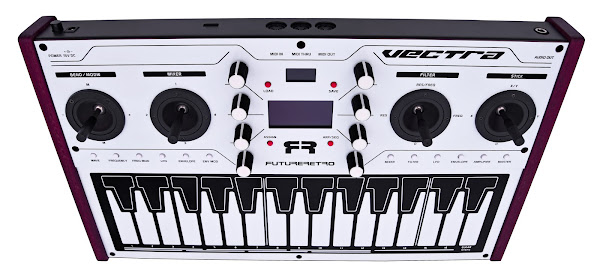 "We are excited to announce the new Vectra synthesizer, and are now taking pre-orders. The total cost of the unit will be $1,100 plus shipping. A deposit payment in the amount of $550 is required to pre-order this unit. Once the first 100 pre-orders are received, we will begin our parts ordering and production of this unit. The remaining balance of $550 plus shipping will be due once these units are ready to ship. We expect shipping to begin around Spring 2022. Although the time-frame will be determined by the availability of components and how quickly you get your pre-order in.
"We are excited to announce the new Vectra synthesizer, and are now taking pre-orders. The total cost of the unit will be $1,100 plus shipping. A deposit payment in the amount of $550 is required to pre-order this unit. Once the first 100 pre-orders are received, we will begin our parts ordering and production of this unit. The remaining balance of $550 plus shipping will be due once these units are ready to ship. We expect shipping to begin around Spring 2022. Although the time-frame will be determined by the availability of components and how quickly you get your pre-order in. Please note, the deposit payment is non-refundable.
Introducing the Vectra Synthesizer...
The Vectra is a unique digital-analog hybrid synthesizer providing four oscillators, white and pink noise sources, four ring modulators, a four-channel mixer, five LFO’s, six morphing envelopes, six primary multimode analog filter types, a main analog VCA, and numerous internal modulation routings and VCA’s controlling modulation amounts.
It really is like having a powerful self-contained semi-modular synthesizer with approximately 500 internal signal routings, and around 256 storable sound parameters.
The Vectra's synthesis architecture is designed to allow the greatest flexibility in recreating multiple synthesis techniques of the past while introducing several new innovations and methods.
The oscillators are digital as this provides the highest degree of tuning stability, while allowing both traditional virtual analog waveforms and 500 digital waveforms. With features like oscillator Sync, PWM, our new waveform Phase Slice, and Fade features, independent glide times per oscillator, constant beat detuning, monophonic and eight paraphonic voice modes, not to mention FM, AM, Ring-modulation, and dedicated LFO’s, Envelopes, and VCA’s per oscillator really make these oscillators a power house.
The four-channel mixer is unique in that it provides an even balance when mixing multiple sources, either manually with the joystick, or applying automated vector mixing, or mixer modulation.
The five LFO’s provide 500+ waveforms to choose from, with their frequency spanning from sub-audio to well into the audio range. Their frequency can be stationary or track keyboard notes with glide. Waveforms can sync to any waveform phase at a note-on, and they can be frequency modulated as well. In short they can be used as LFO’s, complex envelopes, or audio rate oscillators.
The six morphing envelopes are really something else. With each envelope providing initial Delay, Attack, Hold, Decay, Sustain, Release, as well as a loop time when set to Repeat. Ultra precise and snappy, they provide envelope times from 0ms to 14.7 seconds per each stage. Each envelope provides multiple envelope curve selections, and can be one-shot, normal envelope types, or looping. And did you notice they can morph? Yes, that’s right! All six envelopes can morph and modulate between two individual values per each envelope stage.
Monday, April 27, 2009
Mike Oldfield's Fairlight CMI-I and CMI-IIx
Note: links to listings are affiliate links for which the site may be compensated.

via this auction
"Original Fairlight CMI-I and Fairlight CMI-IIx, two units, status report and parts list - see below. These are the original machines from Mike Oldfield's live setup in the mid-80's. Both machines are NOT working, issues and parts are listed below. All parts have been in the laboratory of Virtual Music, Vienna - Worlds best service center for Fairlight CMI's, most of the parts have a clear diagnose from the test CMI system here in Vienna, although some of the parts could not be tested due to hardware failure."

via this auction
"Original Fairlight CMI-I and Fairlight CMI-IIx, two units, status report and parts list - see below. These are the original machines from Mike Oldfield's live setup in the mid-80's. Both machines are NOT working, issues and parts are listed below. All parts have been in the laboratory of Virtual Music, Vienna - Worlds best service center for Fairlight CMI's, most of the parts have a clear diagnose from the test CMI system here in Vienna, although some of the parts could not be tested due to hardware failure."
Monday, January 09, 2012
GillesParenteau Virtual Symphony (Bach Cello Suite #1 and Ave Maria)
YouTube Uploaded by MrGillesParenteau on Oct 21, 2011
Two additional videos below.
"Thanks to my son Michael Parenteau for the filming,to my wife Carmen and my son Christopher for their help, to Kasper Naef for the mechanical engineering, to John Tucker for the sound mixing and producing and to Roland Canada for their continuous support.
Gilles Parenteau new YouTube video on a quest to reintroduce the art of playing the organ.
For more info go to: gillesparenteau.com
"A 2000 year-old tradition worth saving."
Mozart called the pipe organ: "the king of all instruments."
Gilles Parenteau may use electronics instead of pipes but keeps the tradition of playing the organ alive by playing with both feet and hands and not using any pre-recordings so that his performance remains 100% live.
Tuesday, March 01, 2011
Open Labs MiKo Synthesizer / Keyboard

via this auction
"500GB harddrive. Dressed in an all-new Arctic White Chassis color scheme, the Timbaland Special Edition MiKo will stand out in any crowd.
The Timbaland Special Edition MiKo features E-MU™'s new Proteus™ X2 Streaming Sound Module V2.5 with over 7,000 instruments, including the new Ensoniq™ Urban Legends™ Sound Library that contains the sounds from Ensoniq's ASR™/EPS™/MR™/ASR-X™/ZR™ instruments.
Tuesday, July 30, 2024
2006's TimewARP 2600 Gets an Update
TimewARP 2600 - Main Walkthrough video upload by AIR Music Tech
"This isn’t just another synth; it’s a bridge to classic synth royalty, bringing the legendary sounds of the ARP 2600 into the modern era with unmatched authenticity and advanced features.
The ARP 2600, a favorite among many legends like Joe Zawinul, Depeche Mode, Roger Manning Jr., and Pete Townsend. The ARP 2600 bridged the gap between modular and non-modular synths with its ingenious normalized patch design.
First created in 2006 and now updated, the TimewARP 2600 carries that legacy forward, delivering the warm, authentic sound that once revolutionized synth-based music.
Key Features:
● 3 VCOs - All capable of generating audio band and Low Frequency (LF) signals.
● 1 Low-Pass Resonant Filter - Supports variable-depth self-oscillation and audio band and LF control modulation.
● 1 Sample & Hold - Driven by either an internal, external, or MIDI Beat Clock. Can also be used as an LFO source.
● 1 Ring Modulator.
● 1 Noise Generator - Adjustable from white to red noise.
● 2 Envelope Generators - 1 ADSR, 1 AR.
● 1 Envelope Follower.
● 1 VCA - 2 audio inputs, 1 linear control input, 1 exponential control input. Also has initial gain control.
● 4 plug multiple modules.
● Stereo Reverb.
● Output Pan.
● Electronic Switch.
● Lag Processor - LF filtering from 1.2 to 1200Hz.
● 2 Inverter Modules - both with attenuable inputs.
● Preamp In - mono or stereo.
● Virtual ARP 3620 Keyboard.
● Variable-rate portamento, octave switch, pitch bend, LFO controls including delayed sine wave vibrato depth and speed.
● LFO Outputs - Including square, triangle, and sine waves.
● External LFO-In - Allows keyboard voltages to be modulated by any signal present on the TimewARP 2600.
● Interval Latch Switch - Will latch a two note interval for use as single key play.
● 2 Upper Voice Outputs.
● Multiple or Single Trigger Mode - Provides for single or multiple gates for slurred notes.
● Keyboard Repeat Mode - Provides auto repeat or repeat on key-press synchronized to keyboard LFO and MIDI Beat Clock.
● Square wave is syncable to MIDI Clock.
Formats
macOS: AU, VST, VST3, AAX. Windows: VST, VST3, AAX."
https://www.airmusictech.com/virtual-instruments/timewarp-2600/
TimewARP 2600 - Air Music Tech | No Talking | @AIRmusictech
video upload by DKS SYNTH LAB
Timeline
0:00 Intro
0:10 Odyssey & Omni Interfaced
2:29 Arp Omni-2 Polyphonic
3:44 Record Ready Bass
4:36 FM Sequential
4:59 ARP Electronic Piano
5:31 Logan's Run Brass
6:20 SLO Clav 1
7:10 Concert Hall Omni
8:19 Warm Polyphonic 2600
9:10 Ozzy VS 2600
TimewARP 2600 - Authentic Recreation of an Absolute Classic Synth - Let's Check it Out
video upload by The Sound Test Room
Friday, September 18, 2015
Spitfire Audio Introduces EVO GRID 004 WOODWINDS for their EMS VCS3 Inspired Virtual Instrument
Published on Sep 3, 2015 Spitfire Audio
"Spitfire Audio adds another ‘off-grid’ twist to evolving, EMS VCS3-inspired VIs for its Producer Portfolio
LONDON, UK: Spitfire Audio, purveyors of the finest virtual instruments from the finest musical samples in the world, is proud to announce availability of PP025 EVO GRID 004 WOODWINDS, the latest creative chapter in its evocatively-named, evolving EVO GRID series of ‘off-grid’ sample-based virtual instruments initially inspired by the trailblazing late-Sixties-vintage EMS VCS3 portable analogue monosynth and perfectly executed for the Native Instruments KONTAKT platform-compatible Producer Portfolio range — itself launched to satisfy repeated requests for drier-sounding, more manipulative samples for more non-orchestral material, as of September 18…
Following on from the success of Spitfire Audio’s prototypical PP017 EVO GRID 001 STRINGS and its phenomenal PP020 EVO GRID 002 STRINGS followup, as implied by name, PP025 EVO GRID 004 WOODWINDS takes the so-called ‘Evo’ concept from its inception in strings into the wonderful world of woodwinds. What is an Evo, exactly? Evos are hyper-long, sample-based articulations that evolve — sometimes subtly, sometimes severely — over time before looping. These are then organised on a grid so users can plot which evolution or ‘Evo’ sits on which key range, resulting in a GUI (Graphical User Interface) inspired by the breakthrough British EMS VCS3, which made musical history upon its introduction in 1969 by being the first commercially portable synthesiser available anywhere in the world, thanks to its innovative modular matrix-based patchboard dispensing with the telephone exchange-like cabling of other (much larger) modular systems in favour of making space-saving connections with (removable) coloured pins.
PP025 EVO GRID 004 WOODWINDS heads on a similarly flexible sonic bearing, but within the computer-hosted context of a truly 21st Century sample-based virtual instrument fit for ‘off-grid’ minimal musical explorations. Employing some of the UK’s finest, most progressive, and avant-garde woodwind players performing beautifully-orchestrated long notes that increase in intensity and expression, evolving into out-of-this world soundscapes, this eclectic collection of woodwind evolutions designed by Ben Foskett foster an exceptional edge to anyone’s musical endeavours. Returning to record at the ultra-dry, yet warm-sounding surroundings of Central London’s Air-Edel Recording Studios using the finest vintage microphones, Neve preamps, and the last Cadac studio console ever built, ‘Foskett & Co.’ set about creating a product that oozes originality and positively provides inspiration to all that use it. The result? 3,312 superlative samples — some 18.5GB of uncompressed .WAV files — that do just that by doing things with woodwinds that are totally unexpected, yet uniquely musical in execution.
At Air-Edel Recording Studios two subtly different performing lineups — Band A comprising FLUTE (3), ALTO FLUTE (1), BASS FLUTE (1), CONTRA BASS FLUTE (1), Bb CLARINET (3), and Bb BASS CLARINET (3); Band B comprising OBOE (3), COR ANGLAIS (2), Bb CLARINET (2), Bb BASS CLARINET (1), Bb BASS CLARINET (1), BARITONE SAX (1), and BASSOON (3) — led Spitfire Audio to ultimately provide PP025 EVO GRID 004 WOODWINDS users with a nuanced selection of sounds. Some are more reedy-sounding, others more flutey. This time the resultant Evo count stands at a healthy 48 spread across 12 pitch regions — including an additional five grids of wonderfully-warped, saturated, and totally transformed versions of each and every Evo — resulting in an almost infinite number of possibilities. Pressing the save button is important… all the more so given the many randomisation options that are also provided!
Fortunately for (potential) PP025 EVO GRID 004 WOODWINDS purchasers, Spitfire Audio has helpfully seen fit to carefully curate those extraordinary Evos into a number of spring-right-out-of-the-box-style patches — from seemingly-simple tutti-type affairs, featuring all Evos evenly spread across the keyboard, through to various diagonal patterns, as well as a handy feature for randomly creating pinned patterns from the near-infinite number of configuration possibilities — perfectly demonstrating not only the tense and extreme elements of the library but also the effortlessly-engaging ‘episodic’ Evos! Easily-accessible front panel-positioned FX controls (for Reverb, Delay, and Tape Sat.) help make this into a tool truly designed for producers — hence the Producer Portfolio range association, as well as composers, editors, and sound designers alike. Anyone needing a spellbinding solution from the moment they touch the keyboard, in other words! Like the self-explanatory SIMPLE TENSE SCARY subtitling of the PP017 EVO GRID 001 STRINGS and TRADITIONAL EPISODIC EXTREME subtitling of PP020 EVO GRID 002 STRINGS before it, PP025 EVO GRID 004 WOODWINDS can be as time-saving as the trailblazing EMS VCS3 was once space-saving.
Saying that, PP025 EVO GRID 004 WOODWINDS perfectly compliments that recently-released PP017 EVO GRID 001 STRINGS sample-based virtual instrument — an extraordinary collection of long, evolving chamber strings orchestrated by Ben Foskett before being given Spitfire Audio’s adventurous Evo treatment — and its PP020 EVO GRID 002 STRINGS sibling. Says Spitfire Audio Director Paul Thomson: “We’ve got a collection of incredible players here — very progressive, avant-garde wind players, playing beautifully-orchestrated long notes from Ben Foskett that evolve with increases in intensity and expression and different techniques to give you a really beautiful series of long, evolving tones that you can use to work with in a similar way to the STRINGS EVO GRID releases. The EVO GRID GUI is the same as before, so you’ll recognise all of the controls. There are lots and lots of possibilities — millions of possibilities, in fact, so it’s a really creative tool. We’re very proud of it. It’s very different from the strings evolutions that we’ve put out so far, but it’s very, very useful.”
Indeed it is. In this day and age of delivering more musical content against a backdrop of diminishing deadlines and budgetary constraints, composers are often asked to engage the listener by doing very little — least of all changing notes, all those EVO GRID releases represent Spitfire Audio’s masterplan for providing them with a solution to this taxing conundrum. Just ask award-winning composer — and fellow Spitfire Audio Director Christian Henson. Commissioned to write 13 hours of music for a sprawling, epic TV series, but with no budget for orchestra and only three months in which to do it, a quick string sampling session subsequently ensued, during which he fortuitously recorded a series of greatly differing long strings evolutions. Staggered by the resulting sample instrument, where the chaotic nature of different evolutions placed over different intervals made for exciting and unexpected results, he semi-seriously stated, “I could literally hit a big C minor chord, hold my sustain pedal down, reach for my sandwich, and the thing would still be writing itself a minute later while I was wiping mayo off my beard!” From the smallest seed… and all that jazz.
PP025 EVO GRID 004 WOODWINDS and its PP017 EVO GRID 001 STRINGS and PP020 EVO GRID 002 STRINGS sample-based virtual instrument siblings can be purchased and downloaded directly from Spitfire Audio for £179.00 GBP (subject to VAT within the EU) from here:
http://www.spitfireaudio.com/products-page (Note that Spitfire Audio’s free Download Manager application for Mac or PC allows you to buy now and download anytime while a full version of Native Instruments KONTAKT 5 is needed to run these Producer Portfolio products.)
For more in-depth info, including an ear-opening audio demo, please visit the PP025 EVO GRID 004 WOODWINDS webpage here: http://www.spitfireaudio.com/pp-evo-grid-4-woodwinds"
Thursday, June 23, 2022
Open Labs Neko LX5 Synthesizer Workstation
Tuesday, November 21, 2023
Cherry Audio Introduces Synth Stack 4 Collection
video upload by Cherry Audio
Press release follows:
 "Synth Stack 4 assembles 22 of Cherry Audio's virtual instruments at a stunning price, only $299 or less for a very limited time! This astounding collection features 19 emulations of classic vintage synthesizers, three original synthesizers, one massive modular synthesizer platform, and nearly 8,000 presets.
"Synth Stack 4 assembles 22 of Cherry Audio's virtual instruments at a stunning price, only $299 or less for a very limited time! This astounding collection features 19 emulations of classic vintage synthesizers, three original synthesizers, one massive modular synthesizer platform, and nearly 8,000 presets.PRESS RELEASE - November 21, 2023: Cherry Audio has announced Synth Stack 4, the 2023 update to their complete collection of 22 virtual instruments at an astoundingly affordable price. Synth Stack 4 includes 19 emulations of classic vintage synthesizers, three original synthesizers, one massive modular synthesizer platform, and nearly 8,000 presets.
In total, Synth Stack 4 is packed with nearly $1,000 worth of products and is available for a limited time at the stunningly low introductory price of only $299 - that's less than $14 per instrument! This introductory price is available until December 5th, after which Synth Stack 4 returns to its regular price of $399. Already own a previous version of Synth Stack or other individual Cherry Audio instruments? Sign in to see your personalized and discounted price at checkout!
Synth Stack 4 includes:
Voltage Modular Core + Electro Drums, a powerhouse collection of modular madness including 120 modules and over 600 presets.
DCO-106, a stunning recreation of the much-loved Juno-106 polysynth of the 80's.
CA2600, a powerful, self-contained duophonic synthesizer inspired by the groundbreaking ARP 2600 synthesizer.
Surrealistic MG-1 Plus Synthesizer, a super authentic recreation of the fun and funky Moog MG-1 synthesizer sold in Radio Shack stores in 80s.
Polymode, inspired by the groundbreaking Moog Polymoog synthesizer, one of the world’s first polyphonic synthesizers.
Friday, July 20, 2012
RedSound XSFX BPM based effects
Note: links to listings are affiliate links for which the site may be compensated.

via this auction
"This a working XSFX RedSound Effects unit. Barely used, no known issues. It calculates the BPM from audio in and then allows you to add one or more effects sync-ed to the beat or beat increments. The specs below tell the story. RedSound, now out of buiness, only made a few of these. It is used but in great working order, only minor wear from use. The included power supply is not original but heavy duty (4.5amp 16 VDC). No user guide , but this unit is easy to figure out. Sold as is, no return. I only warrant that it will not arrive DOA. No Int'l bidders please, I post feedback and expect to be paid in reasonable amount of time.
FEATURES
AUDIO
FREQUENCY RESPONSE: 20Hz to 20kHz (+/-0.5dB)
 S/N RATIO: 85dB
S/N RATIO: 85dB
THD: 0.015%
INPUT LEVELS: Phono - 55dBV / 47k ohms
Line -14dBV / 22k ohms
Mic - 55dBV / 3 k ohms
OUTPUT LEVELS: Balanced 4 dBm [1.20V] / 600 ohms
Unbalanced 0dBV [1V] / 1 k ohm
BPM ENGINE
RANGES: Low (60 -120BPM), Mid (90 -180BPM), Hi (115 - 230BPM)
LOCK-IN TIME: Typically 1 - 4 sec's (from introduction of readable beat information)
 DISPLAY ACCURACY: 0.1 BPM
DISPLAY ACCURACY: 0.1 BPM
INTERNAL ACCURACY: 3-millisecond sample rate
EFFECTS
FILTER
TYPE: Virtual analog modelled 12dB per octave, Low pass
FX MIXER JOYSTICK: Frequency [X], Resonance [Y]
Z PLANE FADER: Envelope Mod [press & hold FILTER button sets LFO shape]
LFO SHAPES: Triangle, rising, falling, pulse

DELAY
TYPE: Modelled vintage tape delay
FX MIXER JOYSTICK: Reproduction [X], Repeats [Y]
Z PLANE FADER: Level
SPS PANNER
TYPE: Multi pan of low, mid & high frequencies
FX MIXER JOYSTICK: Direction [X], SPS [Y]
Z PLANE FADER: 2-Way Split
CUTTER
TYPE: Variable Ramp Gate
FX MIXER JOYSTICK: Attack [X], Decay [Y]
Z PLANE FADER: Gate Duration
FLANGER
TYPE: Modelled Tape Flanging
FX MIXER JOYSTICK: Frequency [X], Feedback [Y]
Z PLANE FADER: Depth [press & hold FLANGER button sets LFO shape]
LFO SHAPES: Triangle, Rising, Falling, Pulse
OTHER CONTROLS
MASTER ON/OFF: Activates selected effects
MIX FADER: Sets the wet/dry output balance
HOLD [JOYSTICK]: Memorises FX setting as set by joystick in any off-centre positions
FREQUENCY SELECTORS: Low, Mid, High switches select frequency bands for FX processing
FX MODE BUTTONS: Select the main operating mode - single or multi
INPUT SELECTOR: Mic/Line/Phono switch
INPUT LEVEL [CLIP]: Input gain control with bi-colour level indicator
MONITOR LEVEL: Headphone level control
MIC TRIM: Microphone level control
TRIGGER/SPEED [SINGLE MODE]
SETTINGS: Beats [buttons/LEDs] 1/4 -1/3 - 1/2 - 2/3 - 3/4 - 1/1 - 2/1
Bars [rotary encoder/display] 1 - 2 - 3 - 4 - 6 - 8 - 12 - 16
MULTI FX PRESETS [MULTI MODE] 50 x factory presets featuring multiple effect combinations
NUDGE 4 x button keypad for BPM / Synchronisation adjustments
INPUT CONNECTIONS
MIC: 1 x ¡¦Jack socket [front panel]
LINE: 2 x ¡¦Jack socket [rear panel]
PHONO: RCA phono sockets [rear panel] + earthing terminal
OUTPUT CONNECTIONS
BALANCED: 2 x ¡¦Jack socket [rear panel]
UNBALANCED: 2 x RCA phono socket [rear panel]
MONITOR: 1 x ¡¦Jack socket [front panel]
POWER SUPPLY External (16VDC 750mA)
DIMENSIONS/WEIGHT 202[H] x174[W] x30mm[D] 1.25kg"

via this auction
"This a working XSFX RedSound Effects unit. Barely used, no known issues. It calculates the BPM from audio in and then allows you to add one or more effects sync-ed to the beat or beat increments. The specs below tell the story. RedSound, now out of buiness, only made a few of these. It is used but in great working order, only minor wear from use. The included power supply is not original but heavy duty (4.5amp 16 VDC). No user guide , but this unit is easy to figure out. Sold as is, no return. I only warrant that it will not arrive DOA. No Int'l bidders please, I post feedback and expect to be paid in reasonable amount of time.
FEATURES
AUDIO
FREQUENCY RESPONSE: 20Hz to 20kHz (+/-0.5dB)
 S/N RATIO: 85dB
S/N RATIO: 85dBTHD: 0.015%
INPUT LEVELS: Phono - 55dBV / 47k ohms
Line -14dBV / 22k ohms
Mic - 55dBV / 3 k ohms
OUTPUT LEVELS: Balanced 4 dBm [1.20V] / 600 ohms
Unbalanced 0dBV [1V] / 1 k ohm
BPM ENGINE
RANGES: Low (60 -120BPM), Mid (90 -180BPM), Hi (115 - 230BPM)
LOCK-IN TIME: Typically 1 - 4 sec's (from introduction of readable beat information)
 DISPLAY ACCURACY: 0.1 BPM
DISPLAY ACCURACY: 0.1 BPMINTERNAL ACCURACY: 3-millisecond sample rate
EFFECTS
FILTER
TYPE: Virtual analog modelled 12dB per octave, Low pass
FX MIXER JOYSTICK: Frequency [X], Resonance [Y]
Z PLANE FADER: Envelope Mod [press & hold FILTER button sets LFO shape]
LFO SHAPES: Triangle, rising, falling, pulse

DELAY
TYPE: Modelled vintage tape delay
FX MIXER JOYSTICK: Reproduction [X], Repeats [Y]
Z PLANE FADER: Level
SPS PANNER
TYPE: Multi pan of low, mid & high frequencies
FX MIXER JOYSTICK: Direction [X], SPS [Y]
Z PLANE FADER: 2-Way Split
CUTTER
TYPE: Variable Ramp Gate
FX MIXER JOYSTICK: Attack [X], Decay [Y]
Z PLANE FADER: Gate Duration
FLANGER
TYPE: Modelled Tape Flanging
FX MIXER JOYSTICK: Frequency [X], Feedback [Y]
Z PLANE FADER: Depth [press & hold FLANGER button sets LFO shape]
LFO SHAPES: Triangle, Rising, Falling, Pulse
OTHER CONTROLS
MASTER ON/OFF: Activates selected effects
MIX FADER: Sets the wet/dry output balance
HOLD [JOYSTICK]: Memorises FX setting as set by joystick in any off-centre positions
FREQUENCY SELECTORS: Low, Mid, High switches select frequency bands for FX processing
FX MODE BUTTONS: Select the main operating mode - single or multi
INPUT SELECTOR: Mic/Line/Phono switch
INPUT LEVEL [CLIP]: Input gain control with bi-colour level indicator
MONITOR LEVEL: Headphone level control
MIC TRIM: Microphone level control
TRIGGER/SPEED [SINGLE MODE]
SETTINGS: Beats [buttons/LEDs] 1/4 -1/3 - 1/2 - 2/3 - 3/4 - 1/1 - 2/1
Bars [rotary encoder/display] 1 - 2 - 3 - 4 - 6 - 8 - 12 - 16
MULTI FX PRESETS [MULTI MODE] 50 x factory presets featuring multiple effect combinations
NUDGE 4 x button keypad for BPM / Synchronisation adjustments
INPUT CONNECTIONS
MIC: 1 x ¡¦Jack socket [front panel]
LINE: 2 x ¡¦Jack socket [rear panel]
PHONO: RCA phono sockets [rear panel] + earthing terminal
OUTPUT CONNECTIONS
BALANCED: 2 x ¡¦Jack socket [rear panel]
UNBALANCED: 2 x RCA phono socket [rear panel]
MONITOR: 1 x ¡¦Jack socket [front panel]
POWER SUPPLY External (16VDC 750mA)
DIMENSIONS/WEIGHT 202[H] x174[W] x30mm[D] 1.25kg"
Wednesday, May 14, 2025
Meet the M0SS 101 Synthesizer by Andrew John March
M0SS 101 DEMO video upload by Andrew March
"A quick demonstration on how to build a patch with the M0SS-101 synthesizer."
From the creator of WVR, the the M0SS 101 virtual analog monosynth is currently seeking funding on Kickstarter.
"M0SS-101 is a virtual analog monosynth built for a pure, hands-on subtractive synthesis, packed into a compact, rugged guitar pedal enclosure.
With 26 buttons and a single encoder, M0SS-101 gives you intuitive access to a deep 42-parameter virtual analog synthesis engine. Press a button to select a parameter, turn the encoder to modify it, and monitor your signal flow via the LED system.
Using a MIDI controller, you can map any parameter via simple MIDI learn, making it easy to integrate into your setup. Up to 17 presets can be saved and recalled for quick access to your favourite sounds.
The 26 RGB LEDs use colour and brightness to represent signal flow, modulation paths, settings and selections. A separate row of 11 LEDs at the bottom gives you instant visual feedback on the currently selected parameter. I aim to offer an affordable, compact, and versatile instrument, without sacrificing features, ergonomics, or most importantly, fun. I hope you'll enjoy playing this synth as much as I have :'-)"
Wednesday, March 18, 2020
New SYNTHR3 Boutique Modular with Interchangeable Filters by SynthR & oZoe
SynthR3 Demo1 : first sequence test (Berlin School) sync on Electribe
Published on Dec 12, 2019 KurtzMindfields
"Introduce the SYNTHR3 made by Remy Wasselin et Jean-Luc Lartigue.
Prototype N°1
Today discovering the sound and possibilities of this Semi-Modular analog Mono/Paraphonic with 3 VCO + Sub VCO/ 2VCF / 2LFO / 2 VCA / S&H / Noise /Ring Modulator ... and Patch memories ! Arpegiator ! Step Sequencer !(chords or mono). Internal clock or MIDI Clock (as seen in the demo)
Just love it !!!!!!!! "
This one is in via Synth Anatomy who translated the details to English. You can find the SynthR website here.



"SYNTHR3 is a new Boutique modular analog Synthesizer from France with a prewired engine, interchangeable filters, and MIDI control.
The French developer Rémy Wasselin aka SynthR has today introduced the SYNTHR3, a new pre-wired modular analog Synthesizer. The synth is built into a beautiful, compact wooden case with a black faceplate and bluish light buttons.
SYNTHR3 is full analog and can be used in different modes (3-voice paraphonic, 2-voice poly bi-timbral or mono). In full mono (3 oscillators + 1 or 2 filters), paraphonic (3 voices) and duophonic. That’s not all. It also includes an arpeggiator mode with a virtual keyboard split with many possible modes. So VCO 2 can be linked to the arpeggio or free to play. In the sequencer mode, you can memorize the sequences in mono or Para1 mode.
Flexible 3-VCO Design
SYNTHR3 has three analog oscillators, each with different waveforms and modulation options. VCO 1 and 2 outputs triangle, sawtooth and pulse with PW control. VCO 3 includes triangle, reverse sawtooth and square waveforms. The first two oscillators also have dedicated inputs for FM and PWM that can be achieved via LFO1, LFO2, envelope, aftertouch, S&H or VCO2 (cross-mod). Also, you can sync VCO 2 with VCO 1 and apply glide (portamento) to both oscillators.
The third oscillator also includes PWM and frequency modulation via an envelope, aftertouch or LFO2. Further, you have a sub-oscillator with two sub-octaves. Octave -1 outputs triangle, sawtooth, square while octave -2 only square. SYNTHR3 also includes a noise generator (white/pink) and a flexible ring modulator (VCO 1 – 2 and/or VCO3 mixable). All signals come together in the mixer and can be routed independently to VCF 1 or/and VCF2.
Many Legendary Filters In One Synth
The filter section SYNTHR3 offers two filters (VCF) and contains filters from many legendary Synthesizer developers: ARP 4072, SEM, Moog, Steiner, CEM3320, and SI2044. Very exciting is here that all the filters are available and selectable in the Synthesizer. So you can have per example a Moog filter in VCF1 and SEM in the second.
Published on Dec 12, 2019 KurtzMindfields
"Introduce the SYNTHR3 made by Remy Wasselin et Jean-Luc Lartigue.
Prototype N°1
Today discovering the sound and possibilities of this Semi-Modular analog Mono/Paraphonic with 3 VCO + Sub VCO/ 2VCF / 2LFO / 2 VCA / S&H / Noise /Ring Modulator ... and Patch memories ! Arpegiator ! Step Sequencer !(chords or mono). Internal clock or MIDI Clock (as seen in the demo)
Just love it !!!!!!!! "
This one is in via Synth Anatomy who translated the details to English. You can find the SynthR website here.



"SYNTHR3 is a new Boutique modular analog Synthesizer from France with a prewired engine, interchangeable filters, and MIDI control.
The French developer Rémy Wasselin aka SynthR has today introduced the SYNTHR3, a new pre-wired modular analog Synthesizer. The synth is built into a beautiful, compact wooden case with a black faceplate and bluish light buttons.
SYNTHR3 is full analog and can be used in different modes (3-voice paraphonic, 2-voice poly bi-timbral or mono). In full mono (3 oscillators + 1 or 2 filters), paraphonic (3 voices) and duophonic. That’s not all. It also includes an arpeggiator mode with a virtual keyboard split with many possible modes. So VCO 2 can be linked to the arpeggio or free to play. In the sequencer mode, you can memorize the sequences in mono or Para1 mode.
Flexible 3-VCO Design
SYNTHR3 has three analog oscillators, each with different waveforms and modulation options. VCO 1 and 2 outputs triangle, sawtooth and pulse with PW control. VCO 3 includes triangle, reverse sawtooth and square waveforms. The first two oscillators also have dedicated inputs for FM and PWM that can be achieved via LFO1, LFO2, envelope, aftertouch, S&H or VCO2 (cross-mod). Also, you can sync VCO 2 with VCO 1 and apply glide (portamento) to both oscillators.
The third oscillator also includes PWM and frequency modulation via an envelope, aftertouch or LFO2. Further, you have a sub-oscillator with two sub-octaves. Octave -1 outputs triangle, sawtooth, square while octave -2 only square. SYNTHR3 also includes a noise generator (white/pink) and a flexible ring modulator (VCO 1 – 2 and/or VCO3 mixable). All signals come together in the mixer and can be routed independently to VCF 1 or/and VCF2.
Many Legendary Filters In One Synth
The filter section SYNTHR3 offers two filters (VCF) and contains filters from many legendary Synthesizer developers: ARP 4072, SEM, Moog, Steiner, CEM3320, and SI2044. Very exciting is here that all the filters are available and selectable in the Synthesizer. So you can have per example a Moog filter in VCF1 and SEM in the second.
LABELS/MORE:
New,
New in 2020,
New Makers,
New Makers in 2020,
New Synths,
new synths in 2020,
News,
oZoe.fr,
SynthR
NEXT PAGE
HOME
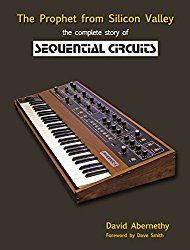
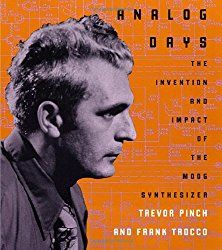
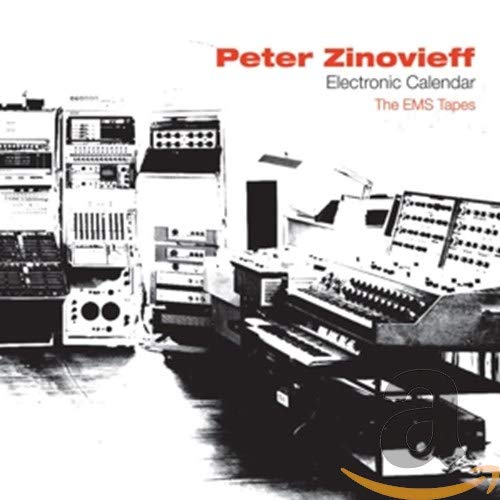
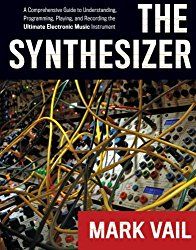
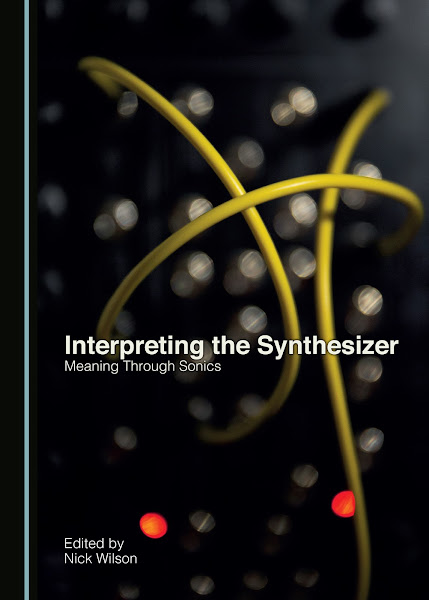
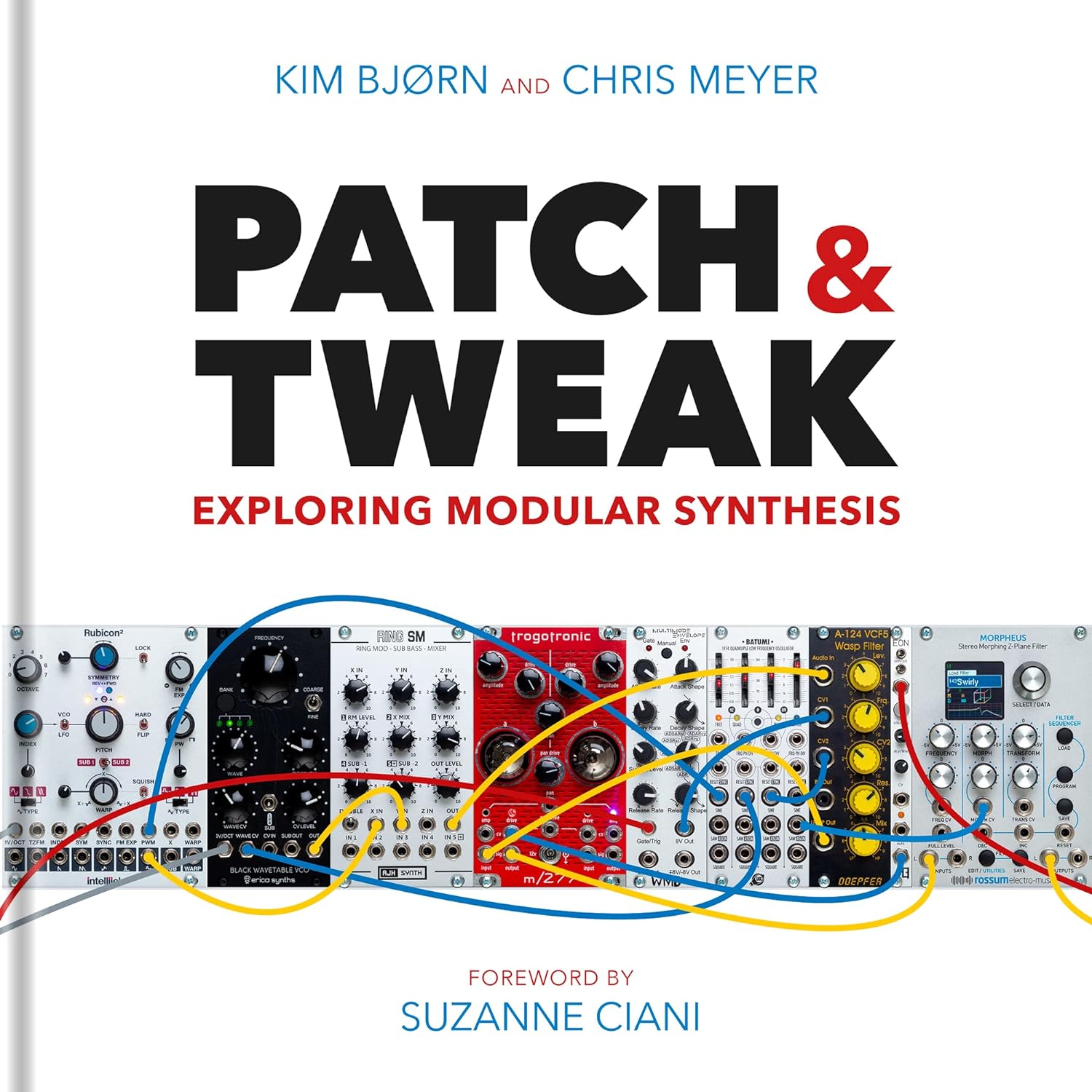
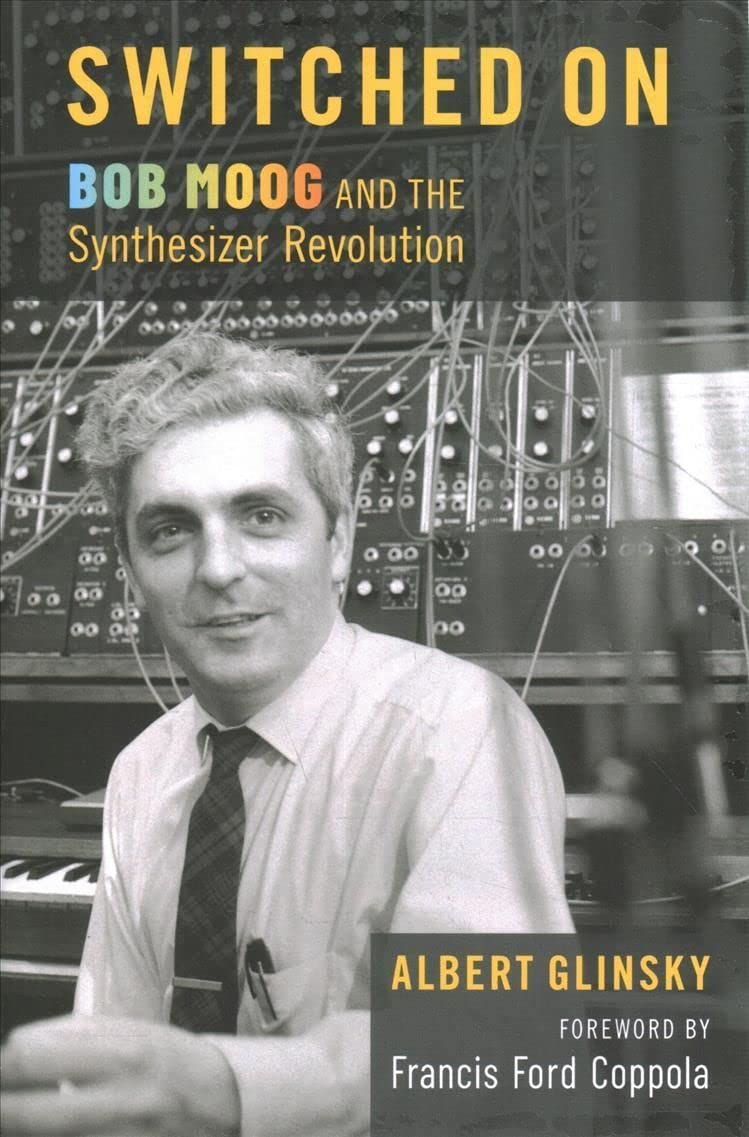
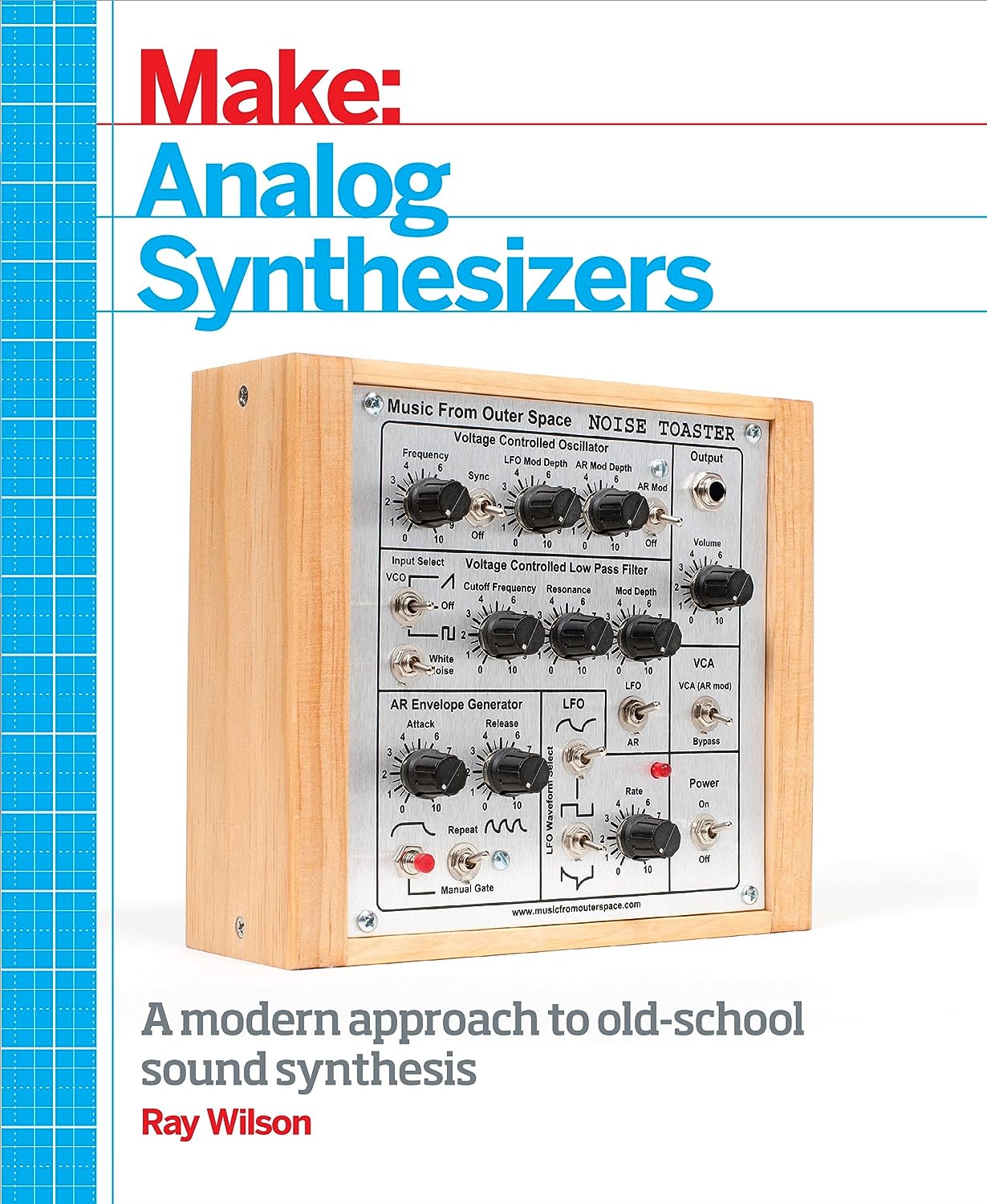
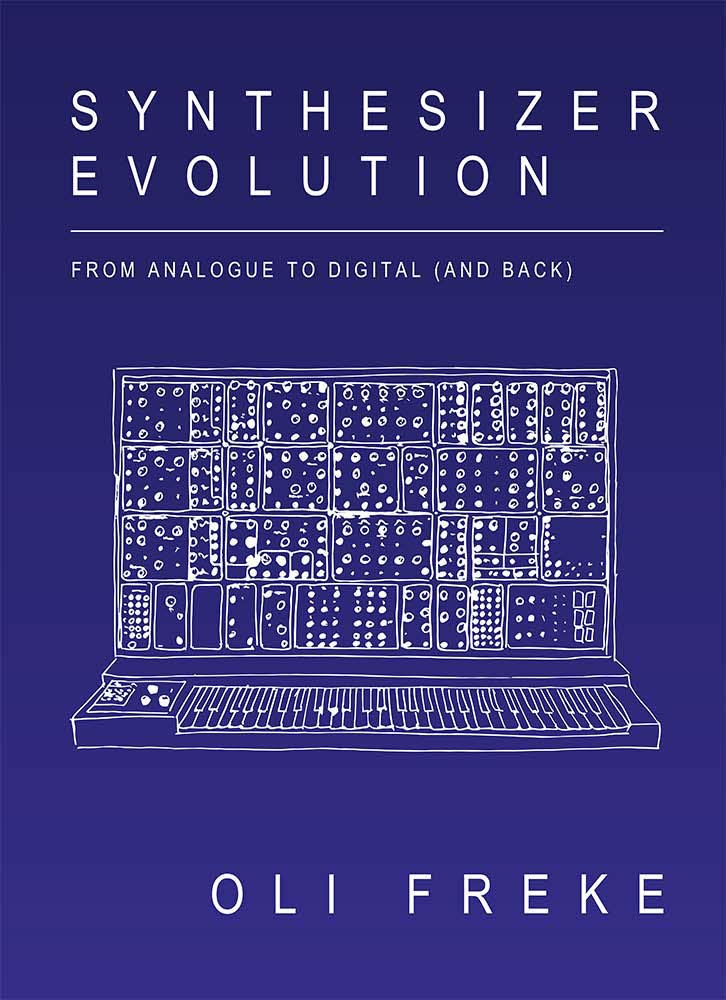
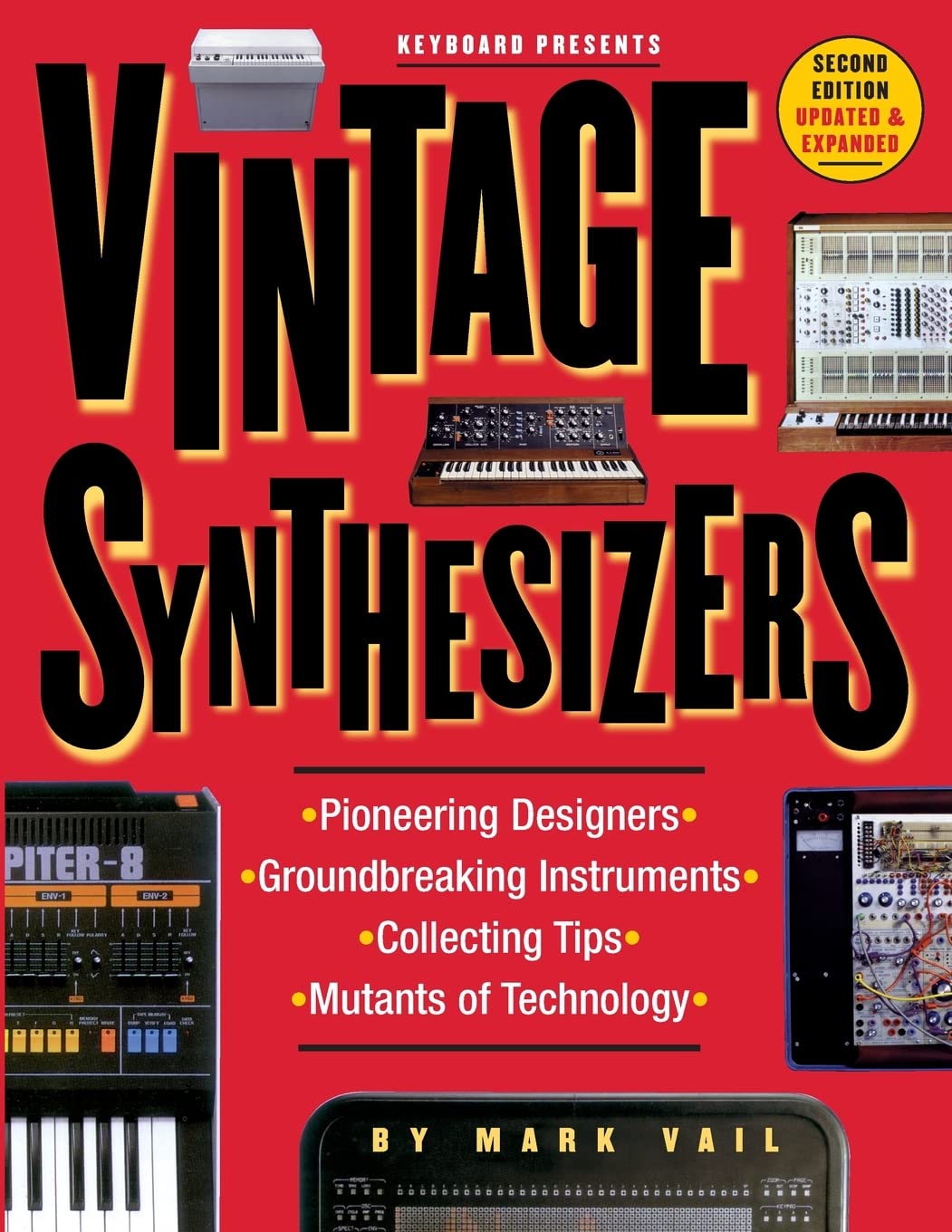
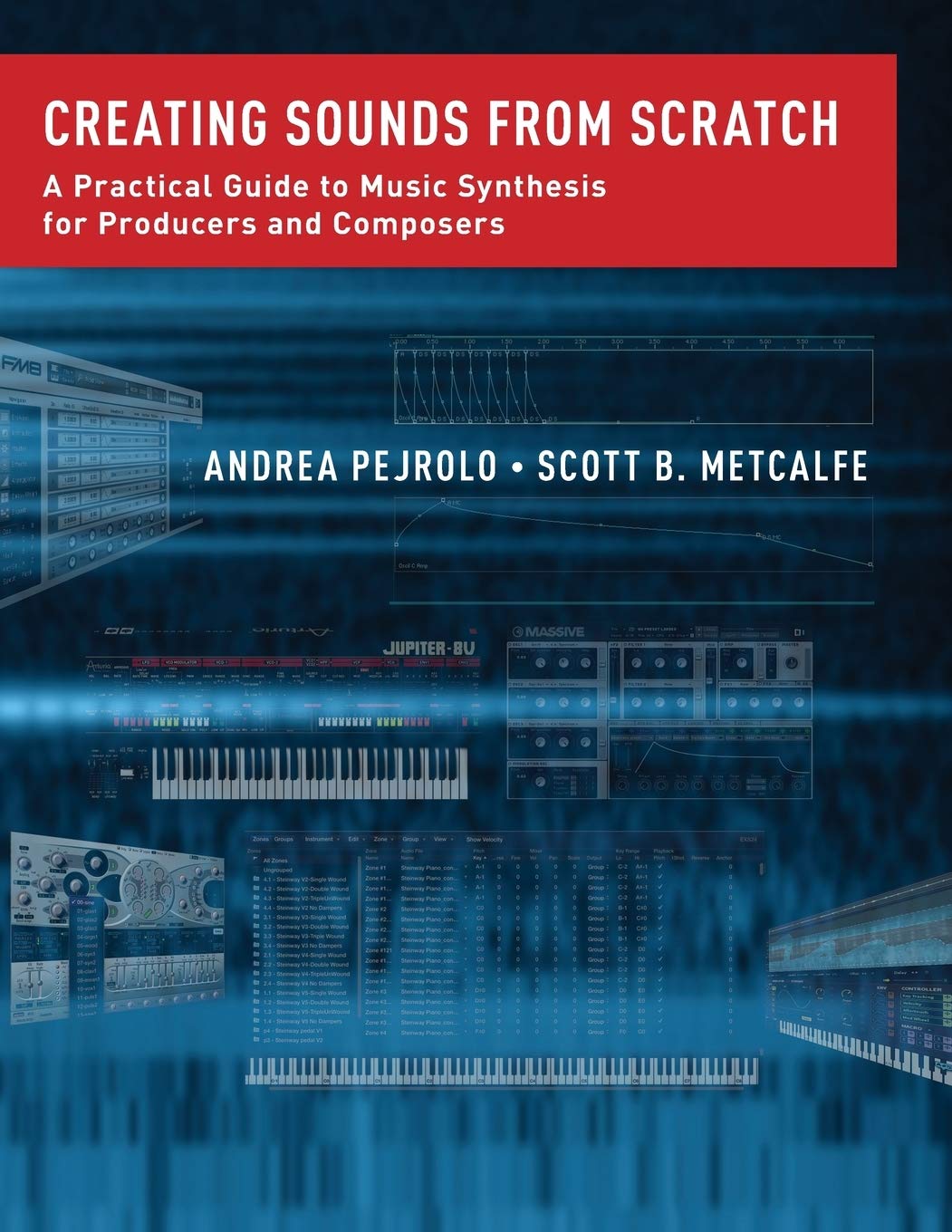
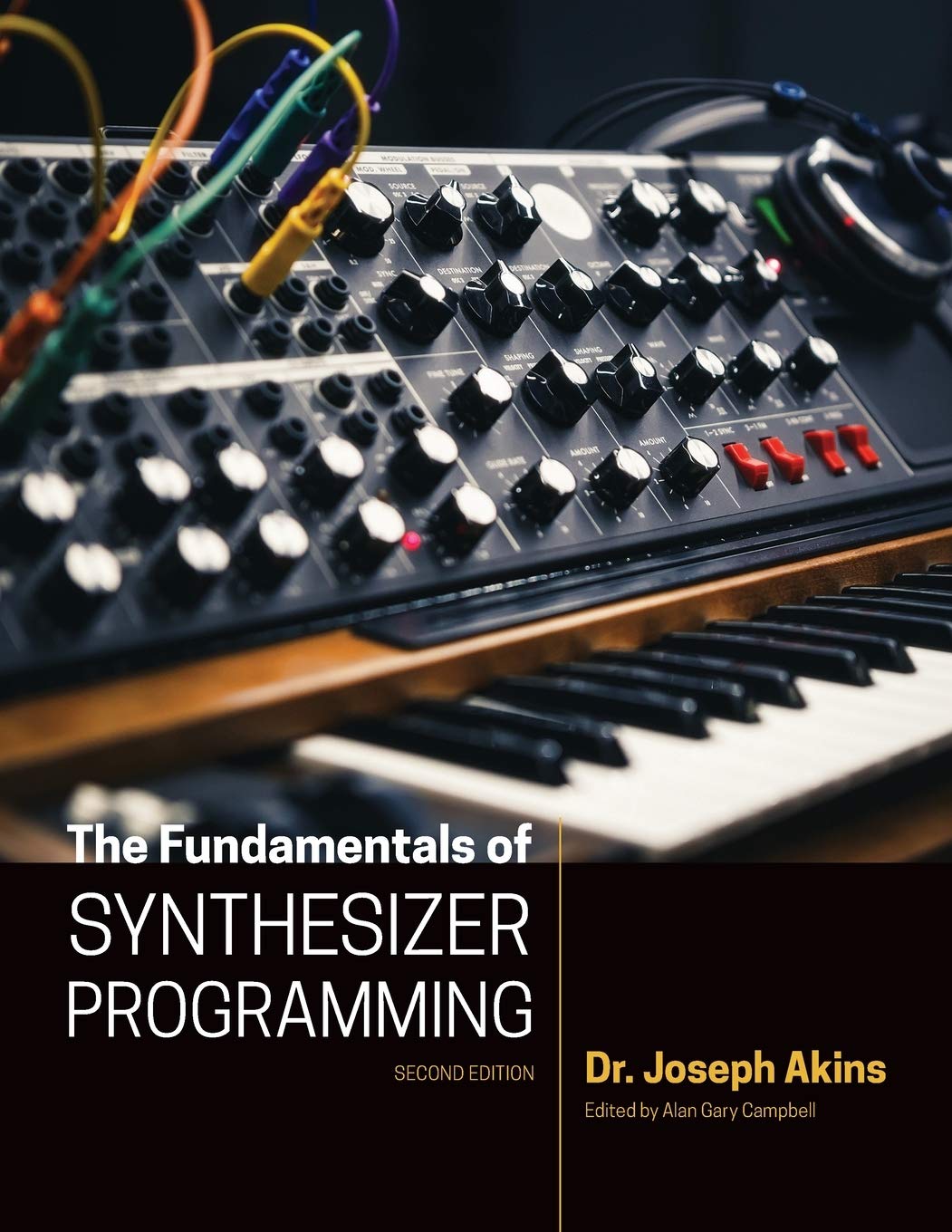

© Matrixsynth - All posts are presented here for informative, historical and educative purposes as applicable within fair use.
MATRIXSYNTH is supported by affiliate links that use cookies to track clickthroughs and sales. See the privacy policy for details.
MATRIXSYNTH - EVERYTHING SYNTH













© Matrixsynth - All posts are presented here for informative, historical and educative purposes as applicable within fair use.
MATRIXSYNTH is supported by affiliate links that use cookies to track clickthroughs and sales. See the privacy policy for details.
MATRIXSYNTH - EVERYTHING SYNTH



























